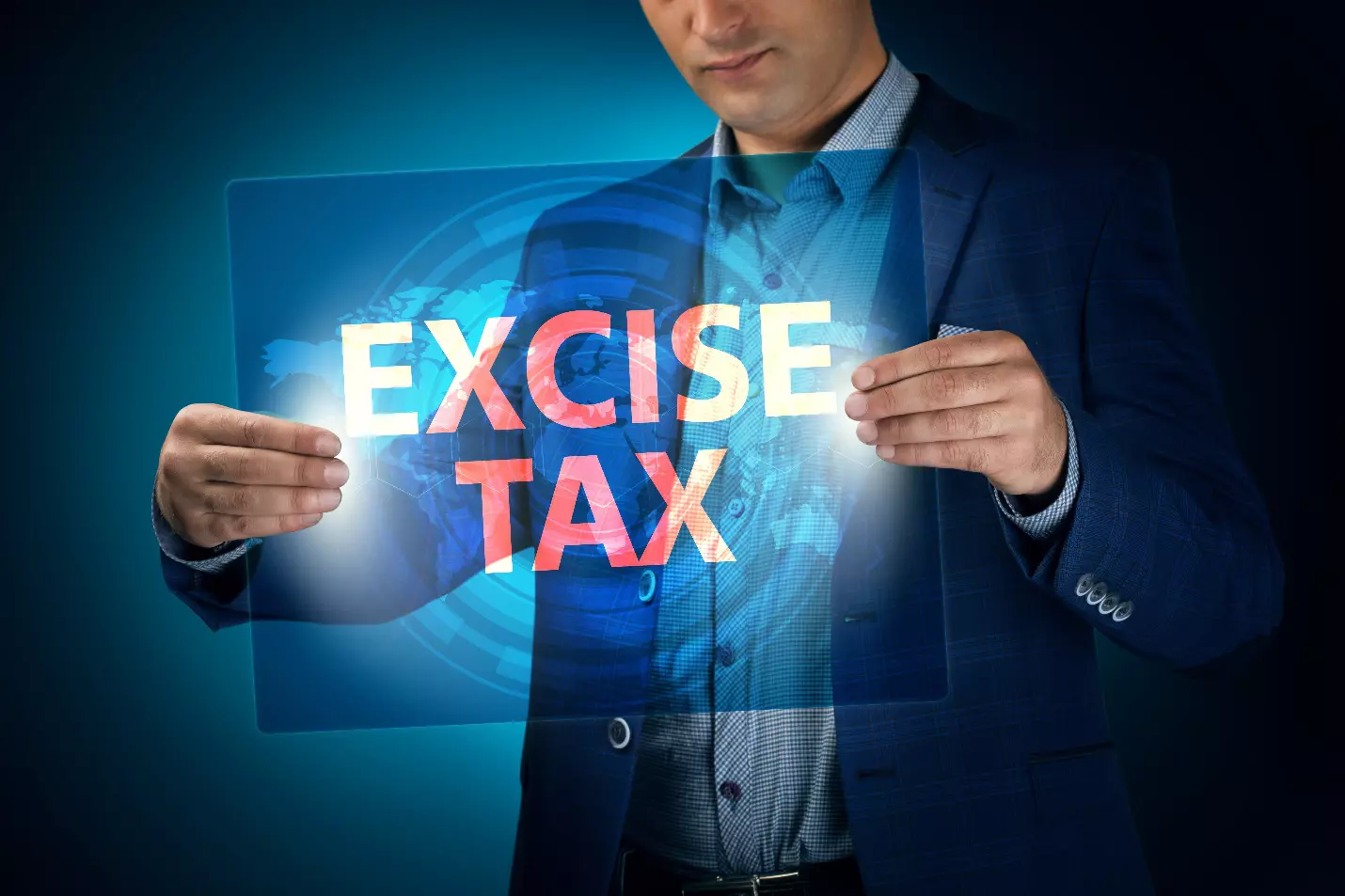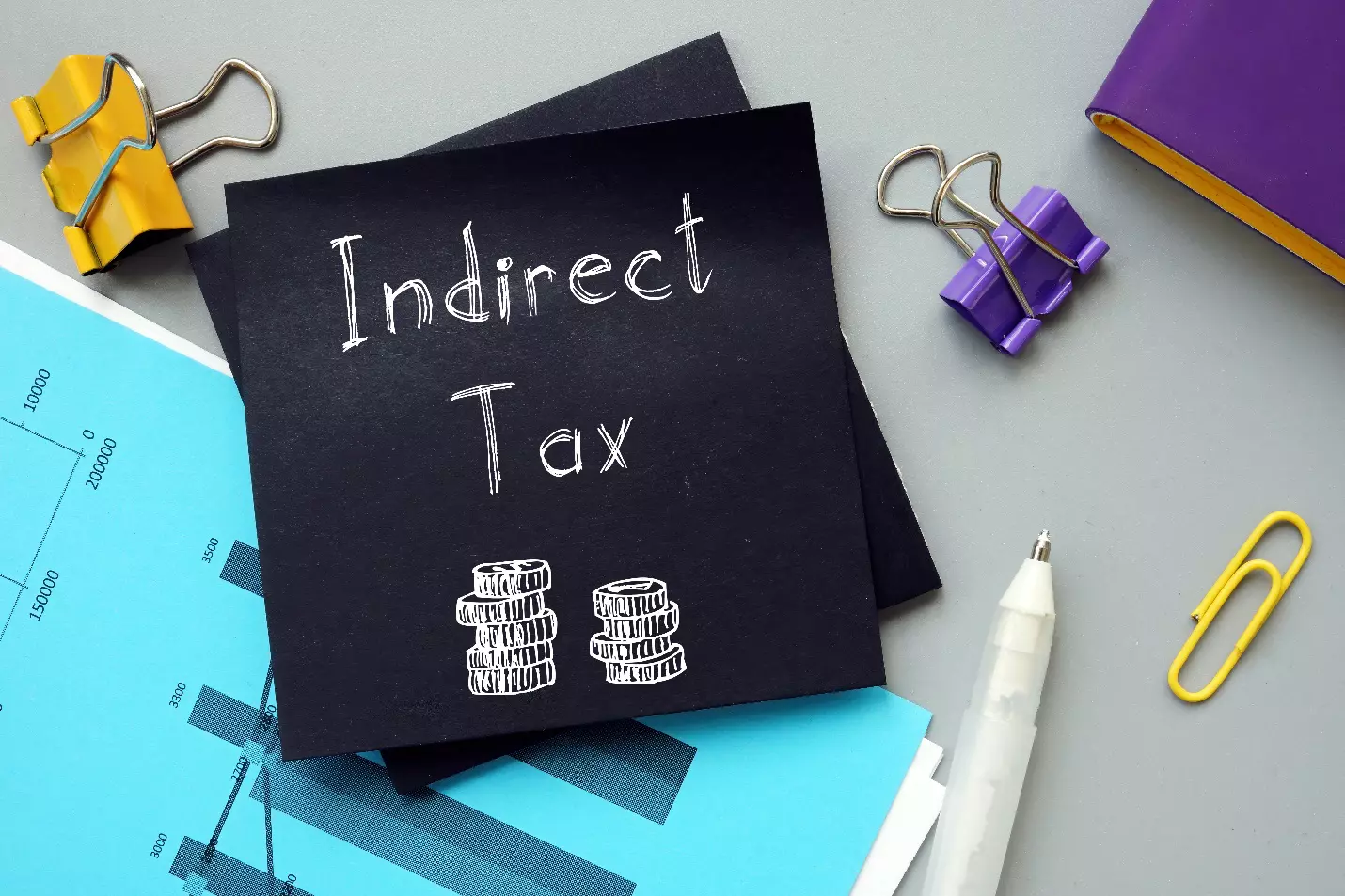- Home>
- Blog>
- Tax-Savings>
- Indirect Tax
Axis Max Life Savings Plans
Trust of 20+ Years in Industry


Written byAbhishek Chakravarti
Taxation & Finance Writer
Published 29th November 2023
Reviewed byAlok Mishra
Last Modified 11th November 2025
Taxation & Finance Expert

What is Indirect Tax?
An indirect tax is a type of tax usually applied to goods and services, where the burden of tax can be passed on to another entity or individual to another. So, in the case of indirect tax, the incidence and impact of taxation does not occur on the same entity.
For instance, indirect taxes are initially paid by manufacturers or suppliers to the government, who then pass this tax burden on to the end-user of a good or service. In contrast to this, income tax is the clearest example of a direct tax where the person earning an income pays the applicable tax directly to the government.
Indirect taxes in India as well as the rest of the world are levied on the import, sale, and manufacture of goods as well as the purchase of goods and services by individuals and corporations. In India some indirect taxes are payable to the Central Government like GST, while others like VAT (Value Added Tax) are payable to the applicable state governments.
Types of Indirect Tax
There are many different types of indirect taxes in India. While the introduction of GST (Goods and Services Tax) has led to a number of indirect taxes being subsumed, many are still payable to central and state tax authorities. Key examples of taxes that are part of the indirect taxation regime include:
1· Goods and Services Tax (GST)
GST is probably most widely known type of indirect tax applicable in India. As the name suggests, GST is applicable to goods and services which are consumed by individuals as well as organization. Goods and Services Tax (GST) was introduced by the central government so, in case of this indirect tax, a single rate of tax for a specific good or service is applicable all over India.
2· Customs duty
Customs duty is a type of indirect tax that is levied on the goods that are imported into India. Customs duty in India is defined under the Customs Act, 1962 and is under the purview of CBEC. This indirect tax is often considered to be the opposite of Excise Duty. Customs duty is applicable only to internationally manufactured goods, while Excise Duty is only applicable to goods manufactured in India.
3· Stamp duty
This is a type of indirect tax levied on the transfer of any immovable type of property in the states of India. Stamp duty varies from circle to circle so the tax on property transactions also varies depending on the circle where the immovable property was bought/sold.
Indirect Taxes Subsumed Under GST
The introduction of GST in India led to significant change in the taxation system in India. The “One India-One Tax” regime has led to a number of indirect taxes being subsumed i.e. replaced by the Goods and Services Tax. Some examples of indirect taxes that have been discontinued to a large extent are follows:
· Service tax
The service tax is levied by the government on an entity that provides a service to an individual or entity. Subsequently, the burden of service tax is passed on to the end-user of the service being provided. Service Tax is levied by the central government through the Central Board of Excise & Customs (CBEC). Currently, service tax in India is only applicable to goods not included in the GST regime like alcohol for human consumption, petrol and diesel.
· Excise duty
When any good or product is manufactured, licensed or sold in India, then indirect tax is levied in the form of excise duty. The manufacturing firm pays taxes on goods and in return recovers the amount from the customers. Excise duty is only applicable to domestic goods. After introduction of GST in India, this tax has largely been discontinued and only applicable to limited number of goods such as alcohol for human consumption.

· VAT (Value Added Tax)
VAT stands for value-added tax and is a type of indirect tax levied on a product sold directly to a consumer. This indirect tax is under the purview of the Central Sales Tax which is paid to the ‘Government of India - State Central Sales Tax’ and paid to the respective state governments.
VAT has largely been discontinued in India subsequent to GST introduction. However, few goods like alcohol for human consumption that are not part of India’s GST regime are still in the ambit of this indirect tax.
VAT has largely been discontinued in India subsequent to GST introduction. However, few goods like alcohol for human consumption that are not part of India’s GST regime are still in the ambit of this indirect tax.
Due Dates for Advance Tax Payment In India
Self-employed business and professional companies or entities need to clear the minimum percentage of advance tax liabilities as per the due dates mentioned below:
- At least 30 per cent of the tax liability by the 15th of September of a financial year
- At least 60 per cent of the tax liability by the 15th of December of a financial year
- 100 per cent of the tax liability by the 15th of March of a financial year
Failure to make payments in a timely manner as per the above advance tax payment schedule can lead to substantial penalties for the taxpayer. The possible penalties are discussed in the next section.
Benefits of Indirect Tax
Just like direct taxes, the indirect tax regime also offers some key benefits to taxpayers as well as the government. Here are some of the most important advantages of indirect taxes:
- High level of convenience: Indirect taxes do not burden the initial taxpayer as they can be transferred to a different entity or end-user at a later date. So only the entity who consumes the good/service actually pays the tax. Additionally, state government authorities find it convenient to levy indirect type of taxes because it is collected directly and helps save a lot of time and effort.
- Easy collection: Indirect taxes are easy to collect as compared to direct taxes. Since indirect taxes are easy to collect at the time a purchase is made or goods are transported, the authorities have to put in less effort for tax collection.

- Wider Taxpayer Base: Individuals who earn less than Rs 2.5 lakhs per annum are exempt from income tax. What’s more currently individuals with annual income less than Rs. 5 lakh are eligible for tax rebate up to Rs. 12,500 under Section 87A. This means that these individuals do not make any tax contribution to the government. Since indirect taxes are charged on consumption, every individual irrespective of the income tax slab in which they fall pays taxes and contributes to the growth of the economy.
- Equitable contributions: Indirect taxes are directly related to the cost of services and products. This essentially means that individuals who consume less pay lower amount of tax while those consuming more pay more tax. Similarly, luxury items are charged a higher rate of indirect tax, thereby ensuring that contributions are absolutely equitable.
Key Features of Indirect Taxes
- Liability of taxes: The seller or the service provider pays indirect taxes to the government and the liability is ultimately transferred to the customer.
- Nature of indirect taxes: Indirect taxes can initially be considered to be regressive in nature. Now, thanks to the goods and services tax, these taxes are now quite progressive.
- Investment and savings: Indirect taxes are usually growth-oriented, keeping in mind the fact that these types of taxes encourage individuals to save and invest well.
- Evasion: It is hard to evade indirect taxes because they are directly implemented through the transport or sale of products or when services are provided.
Who Needs to Pay Indirect Tax In India?
Indirect taxes most used and imposed by the government for revenue generation. Indirect taxes are nothing but taxes that are levied equally on all taxpayers, irrespective of their income. In most cases, indirect taxes are directed at consumption, so individuals who consume goods and services more have to pay more tax, while those with lower consumption end up paying less indirect tax.
FAQs
Can indirect tax rates change?
Yes, indirect taxes are subject to change based on the economy and a number of other factors based on which the government can decide the cut or rise the rate of tax. In case of GST, the changes of GST rates for different goods and services are decided by the GST Council.
Will I have to pay indirect tax if I purchase a ticket for a cricket match?
Yes, the earlier entertainment tax has been subsumed by GST. So, you have to pay GST at the applicable rate for your ticket to the cricket match.
What is indirect tax with example?
An indirect tax can be passed on to another individual or entity. The most common example of an indirect tax is the excise duty on alcohol for human consumption. While excise duty is initially paid to the state government by the distiller of alcohol, the tax is passed onward till it is finally paid by the end-user.
What is indirect tax vs direct tax?
Direct taxes are charged on income and profits, so they cannot be passed on from one entity to another. While indirect taxes are usually charged on sale, licensing, transport, purchase and/or consumption of goods and services, so they can be passed on from one entity to another.
What is indirect tax in GST?
GST i.e. Goods and Services Tax is an indirect tax levied on the supply of services and goods. GST rates are uniform across India which makes it easier for businesses as well as the government to adhere to tax collection norms.
ARN: Dec23/Bg/05N
Source:
economictimes.indiatimes.com/definition/indirect-tax
www.economicsdiscussion.net/taxes/advantages-and-disadvantages-of-indirect-taxes/1944
www.business-standard.com/about/what-is-indirect-tax
economictimes.indiatimes.com/definition/indirect-tax
www.thenewsminute.com/article/what-indirect-taxation-and-who-needs-pay-it-162254
economictimes.indiatimes.com/definition/indirect-tax
www.economicsdiscussion.net/taxes/advantages-and-disadvantages-of-indirect-taxes/1944
www.business-standard.com/about/what-is-indirect-tax
economictimes.indiatimes.com/definition/indirect-tax
www.thenewsminute.com/article/what-indirect-taxation-and-who-needs-pay-it-162254
Popular Searches

Online Sales Helpline
- Whatsapp: 7428396005Send ‘Quick Help’ from your registered mobile number
- Phone: 0124 648 890009:30 AM to 06:30 PM
(Monday to Sunday except National Holidays) - service.helpdesk@axismaxlife.comPlease write to us incase of any escalation/feedback/queries.
Customer Service
- Whatsapp: 7428396005Send ‘Hi’ from your registered mobile number
- 1860 120 55779:00 AM to 6:00 PM
(Monday to Saturday) - service.helpdesk@axismaxlife.comPlease write to us incase of any escalation/feedback/queries.
NRI Helpdesk
- +91 11 71025900, +91 11 61329950 (Available 24X7 Monday to Sunday)
- nri.helpdesk@axismaxlife.comPlease write to us incase of any escalation/feedback/queries.







